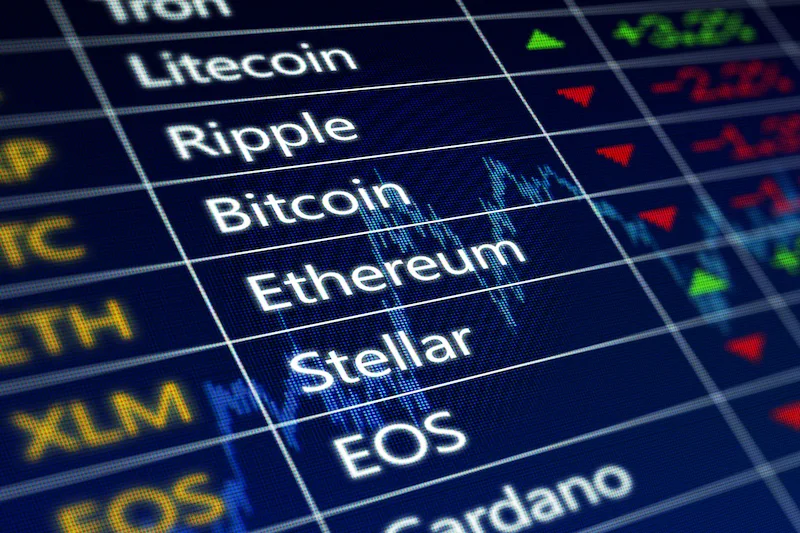Cryptocurrency is often seen as the wild west of the financial world. With its rapid growth and volatility, the crypto market has caught the attention of both seasoned investors and curious newcomers. Amidst the myriad of digital currencies, stablecoins have emerged as a beacon of stability, offering a semblance of safety in an otherwise turbulent market. But are they as secure as they seem? This article delves into the risks associated with investing in stablecoins, offering insights into the potential pitfalls investors might face.
Stablecoins are digital currencies designed to mimic the value of traditional currencies like the US dollar or the Euro. They aim to offer the best of both worlds: the efficiency and speed of cryptocurrencies and the stability of fiat money. But like any investment, stablecoins come with their own risks often overshadowed by their promise of stability.
This article will take you on a journey through the world of stablecoins, uncovering the risks every investor should consider before diving in. From regulatory uncertainties to technological vulnerabilities, we’ll explore the various factors that could potentially disrupt the stability that stablecoins promise. Whether you’re a seasoned crypto enthusiast or a cautious investor, understanding these risks is crucial for making informed decisions in the ever-evolving world of digital currencies.
What Are Stablecoins?
Stablecoins are a unique breed of cryptocurrency designed to offer stability in a market known for its volatility. Unlike traditional cryptocurrencies like Bitcoin and Ethereum, which can experience significant price swings, stablecoins are pegged to stable assets such as fiat currencies, commodities, or other cryptocurrencies. This pegging mechanism is intended to maintain a stable value, making stablecoins an attractive option for investors seeking a safe haven in the crypto space.
There are several types of stablecoins, each with its own mechanism for maintaining stability:
- Fiat-collateralized stablecoins: These are backed by a reserve of fiat currency, such as the US dollar. For example, each USDC or Tether (USDT) is supposed to be backed by one US dollar held in reserve.
- Crypto-collateralized stablecoins: These stablecoins are backed by a reserve of other cryptocurrencies. They use smart contracts to lock in collateral and maintain stability. Examples include DAI and sUSD.
- Non-collateralized (algorithmic) stablecoins: These stablecoins are not backed by any collateral. Instead, they use algorithms and smart contracts to control supply and demand to maintain a stable value. Examples include Ampleforth and TerraUSD.
Stablecoins achieve stability through various mechanisms, such as collateralization, algorithmic supply adjustments, or a combination of both. However, each mechanism carries its own risks and vulnerabilities, which can impact the stability and value of the stablecoin.
The Appeal of Stablecoins
Stablecoins offer several advantages that make them appealing to both individual investors and institutions:
- Stability: Unlike traditional cryptocurrencies, stablecoins aim to maintain a stable value, reducing price volatility risk. This stability makes them an attractive option for those seeking to protect their investments from market fluctuations.
- Use cases: Stablecoins can be used for various purposes, such as facilitating cross-border transactions, enabling remittances, and providing a stable store of value. They are also widely used in decentralized finance (DeFi) applications, offering liquidity and stability to the ecosystem.
- Benefits for investors: Stablecoins offer the benefits of cryptocurrencies, such as fast and low-cost transactions, without the extreme volatility of other digital assets. They can serve as a stable store of value and diversify investment portfolios.
Despite these benefits, stablecoins are not without risks. Understanding these risks is essential for investors seeking to make informed decisions in the crypto space.
Regulatory Risks
One of the most significant risks of stablecoins is the lack of global regulation. While cryptocurrencies operate in a decentralized and borderless environment, regulatory frameworks still evolve, leading to uncertainty and potential challenges for stablecoin issuers and investors.
- Lack of Global Regulation: Stablecoins operate in a regulatory gray area, as countries have varying approaches to regulating digital currencies. This lack of uniform regulation can create uncertainty and risks for stablecoin holders. Regulatory developments in one country can have a ripple effect on the global stablecoin market, impacting prices and investor sentiment.
- Potential for Regulatory Changes: As governments and regulatory bodies continue to explore the implications of digital currencies, stablecoins may face increased scrutiny and regulatory changes. These changes can impact the operation and value of stablecoins, potentially leading to market instability.
- Impact on Stablecoin Value and Investor Protection: Regulatory actions can affect the value and usability of stablecoins. For example, if a government bans or restricts the use of a particular stablecoin, it can lead to a loss of confidence and a decline in its value. Moreover, regulatory changes can impact investor protection, leading to potential losses for stablecoin holders.
Counterparty Risks
Counterparty risk refers to the possibility that the issuer of a stablecoin may not fulfill its obligations, leading to a loss of value for investors. This risk is particularly relevant for fiat-collateralized stablecoins, where trust in the issuer is crucial.
- Trust in the Issuer: Investors rely on the issuer of a stablecoin to maintain the necessary reserves and ensure the stablecoin’s stability. However, if the issuer lacks transparency or maintains adequate reserves, it can lead to a loss of trust and value.
- Risks of Centralization: Many stablecoins are issued and managed by centralized entities, which can introduce centralization risks. These entities may face financial difficulties, regulatory actions, or other challenges that can impact the stablecoin’s stability.
- Historical Examples of Issuer Failure: There have been instances where stablecoin issuers faced financial difficulties or regulatory challenges, leading to a loss of value for investors. For example, the collapse of the Terra ecosystem in 2022 highlighted the risks of relying on centralized issuers and the potential for stablecoins to lose their peg.
Technological Risks
Stablecoins, like all digital currencies, are subject to technological risks. These risks can arise from vulnerabilities in the underlying blockchain technology or the smart contracts used to manage the stablecoin.
- Smart Contract Vulnerabilities: Stablecoins that rely on smart contracts for collateral management or supply adjustments are susceptible to vulnerabilities and exploits. Hackers can exploit weaknesses in smart contracts, leading to a loss of funds or destabilizing the stablecoin.
- Blockchain Security Issues: The security of the blockchain on which a stablecoin operates is crucial for its stability. Any vulnerabilities or attacks on the blockchain can impact the stablecoin’s value and usability.
- Risk of Hacking and Loss of Funds: Stablecoins, like other digital assets, are vulnerable to hacking and theft. Cyberattacks on exchanges, wallets, or the stablecoin’s infrastructure can result in significant losses for investors.
Market Risks
Stablecoins are not immune to market risks, which can impact their value and stability. These risks arise from factors such as liquidity, market volatility, and the potential for depegging.
- Liquidity Risks in Stablecoin Markets: Stablecoin markets can experience liquidity issues, particularly during periods of market stress. A lack of liquidity can lead to difficulties in buying or selling stablecoins, resulting in price fluctuations and potential losses for investors.
- Impact of Market Volatility on Stablecoins: While stablecoins are designed to maintain a stable value, they can still be affected by market volatility. Sudden price swings in the broader crypto market can lead to changes in demand for stablecoins, impacting their value.
- Potential for Depegging: Stablecoins aim to maintain a peg to a stable asset, such as a fiat currency. However, market conditions or other factors can lead to depegging, where the stablecoin’s value diverges from its intended peg. Depegging can result in significant losses for investors who rely on the stablecoin’s stability.
Economic Risks
Economic factors, such as inflation, interest rates, and macroeconomic conditions, can also impact the value and stability of stablecoins. These risks are particularly relevant for fiat-backed stablecoins.
- Influence of Macroeconomic Factors: Stablecoins are subject to the same economic forces that impact traditional currencies. Changes in economic conditions, such as inflation or interest rate fluctuations, can affect the value and stability of stablecoins.
- Inflation and Interest Rates: Inflation and interest rates can impact the value of fiat-backed stablecoins. For example, if the currency backing a stablecoin experiences high inflation, the stablecoin’s value may decline relative to other currencies.
- Risks Associated with Fiat-backed Stablecoins: Fiat-backed stablecoins are vulnerable to risks associated with the underlying fiat currency. If the currency experiences devaluation or instability, it can impact the stablecoin’s value and investor confidence.
Legal and Compliance Risks
Stablecoins operate in a complex legal environment, and failure to comply with legal and regulatory requirements can lead to significant risks for issuers and investors.
- Legal Challenges and Litigation Risks: Stablecoins can face legal challenges and litigation risks related to their issuance, use, and operation. Legal disputes can impact the stablecoin’s value and stability, leading to potential losses for investors.
- Compliance with AML and KYC Regulations: Stablecoin issuers must comply with anti-money laundering (AML) and know your customer (KYC) regulations to prevent illicit activities. Failure to comply with these regulations can result in legal penalties and reputational damage.
- Consequences of Non-Compliance: Non-compliance with legal and regulatory requirements can lead to significant consequences for stablecoin issuers and investors. Regulatory actions, such as fines or sanctions, can impact the stablecoin’s value and investor confidence.

Conclusion
Stablecoins offer a unique combination of stability and efficiency, making them an attractive option for investors seeking a safe haven in the crypto market. However, they are not without risks. From regulatory uncertainties to technological vulnerabilities, stablecoins face a range of challenges that can impact their value and stability. Investors should conduct thorough due diligence and risk assessment before investing in stablecoins. Understanding the potential risks and their implications is crucial for making informed decisions in the ever-evolving world of digital currencies.
FAQ’s?
What is the primary advantage of stablecoins over traditional cryptocurrencies?
The primary advantage of stablecoins over traditional cryptocurrencies is their stability. Stablecoins are designed to maintain a stable value, reducing the risk of price volatility and providing a reliable store of value for investors.
How can investors mitigate the risks associated with stablecoins?
Investors can mitigate risks by diversifying their investment portfolio, conducting thorough research on stablecoin issuers, and staying informed about regulatory developments. It’s also important to use secure wallets and exchanges to protect against hacking and theft.
Are there any insured stablecoins?
While some stablecoin issuers may offer insurance or guarantees, most stablecoins are not insured. Investors should carefully review the terms and conditions of any insurance or guarantee offered by stablecoin issuers.
What role do stablecoins play in decentralized finance (DeFi)?
Stablecoins play a crucial role in decentralized finance (DeFi) by providing liquidity and stability to the ecosystem. They are used in various DeFi applications, such as lending, borrowing, and trading, offering a stable medium of exchange and store of value.
How do stablecoins impact the broader financial system?
Stablecoins have the potential to impact the broader financial system by providing an alternative to traditional currencies and payment systems. They can facilitate cross-border transactions, reduce transaction costs, and increase financial inclusion. However, their widespread adoption also raises concerns about regulatory oversight and financial stability.





